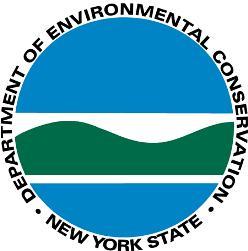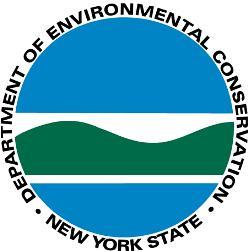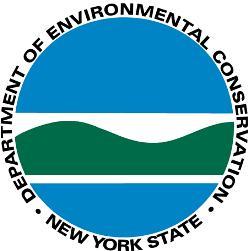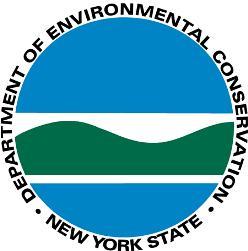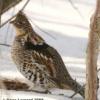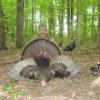Author Name: John Burmeister
DEC ACCEPTING APPLICATIONS FOR PHEASANT RELEASE PROGRAM
The application period is now open for the New York State Department of Environmental Conservation’s cooperative Day-Old Pheasant Chick Program, the agency announced today. The program enhances opportunities for pheasant hunting in New York state through a partnership between DEC and the sporting community, 4-H youths and landowners interested in rearing and releasing pheasants.
The Day-Old Pheasant Chick Program began in the early 1900s. In the early days of the program, pheasant eggs and chicks were distributed to farmers and rural youths via 4-H clubs. Today, day-old chicks are available at no cost to participants who are able to provide a brooding facility and covered outdoor rearing pen, and have identified an adequate release site. Approved applicants will receive the day-old chicks in April, May or June. No chicks obtained through the Day-Old Pheasant Chick Program are permitted to be released on private shooting preserves. All release sites must be approved in advance by DEC and must be open to the public for pheasant hunting. The program is funded through the State Conservation Fund from license fees paid by hunters, trappers and anglers.
Participants must monitor the health of the birds daily to ensure there is adequate feed and water for the rapidly growing chicks. The pheasants may be released when they are eight weeks old and no later than Dec. 1. Individuals interested in these programs should contact their nearest DEC regional office (please refer to offices listed below) for applications and additional information.
In 2011, DEC distributed 46,496 day-old pheasant chicks to qualified applicants.
Applications must be filed with a DEC regional wildlife manager by March 15, 2011.
DEC Region 1 - Nassau and Suffolk counties:
SUNY at Stony Brook
50 Circle Road
Stony Brook, NY 11790
(631) 444-0310
DEC Region 3 - Dutchess, Orange, Putnam, Rockland, Sullivan, Ulster and Westchester counties:
21 South Putt Corners Rd.
New Paltz, NY 12561
(845) 256-3098
DEC Region 4 - Albany, Columbia, Delaware, Greene, Montgomery, Otsego, Rensselaer, Schenectady and Schoharie counties:
65561 State Hwy 10, Suite 1
Stamford, NY 12167
(607) 652-7367
DEC Region 5 - Clinton, Essex, Franklin, Fulton, Hamilton, Saratoga, Warren and Washington counties:
1115 Route 86, PO Box 296
Ray Brook, NY 12977
(518) 897-1291
DEC Region 6 - Herkimer, Jefferson, Lewis, Oneida and St. Lawrence counties:
317 Washington Street
Watertown, NY 13601
(315) 785-2261
DEC Region 7 - Broome, Cayuga, Chenango, Cortland, Madison, Onondaga, Oswego, Tioga and Tompkins counties:
1285 Fisher Ave. Cortland, NY 13045
(607) 753-3095 x 247
DEC Region 8 - Chemung, Genesee, Livingston, Monroe, Ontario, Orleans, Schuyler, Seneca, Steuben, Wayne and Yates counties:
6274 East Avon-Lima Rd.
Avon, NY 14414
(585) 226-5380
DEC Region 9 - Allegany, Chautauqua, Cattaraugus, Erie, Niagara and Wyoming counties:
182 East Union, Suite 3
Allegany, NY 14706-1328
(716) 372-0645
Author Name: John Burmeister
The New York State Department of Environmental Conservation (DEC) is asking the public to report any instances of deer appearing sick or acting abnormally. DEC is only investigating deer that appear to have died from unknown causes and not those that were killed by a vehicle, the agency announced today.
Anyone who sees a white-tailed deer acting abnormally or who finds a dead deer that was not struck by a vehicle is asked to report the animal to the nearest DEC regional office or to an Environmental Conservation Officer or Forest Ranger.
“One of the ways that DEC monitors the health of New York’s deer herd is by performing post- mortem examinations to determine the cause of the illness or death,” said Assistant Commissioner for Natural Resources Kathleen Moser. “We depend on information provided by people who are outdoors to tell us when they see something that does not look right to them.”
Recently, DEC indentified an uncommon bacterial disease in a deer from Warren County. This bacterial disease does not affect humans. However, DEC is seeking additional information to determine the prevalence of this disease in the deer herd and is responding to reports of deer that are acting abnormally. Deer with this bacterial disease may have a swollen head, neck or brisket. They also may exhibit excessive drooling, nasal discharge or respiratory distress. To aid in this investigation, DEC would also like to examine any deer that are found dead from unknown causes.
People should not handle or eat any deer that appears sick or acts abnormally. Sightings of sick, dying or dead deer should be reported to the nearest DEC regional office or an Environmental Conservation Officer or Forest Ranger.
Author Name: John Burmeister
The New York State Department of Environmental Conservation (DEC) has revised its Chronic Wasting Disease (CWD) regulations to prohibit the importation of certain parts of white-tailed deer taken in the state of Maryland effective immediately, DEC Commissioner Joe Martens announced today.
The first case of CWD in the state of Maryland was confirmed by the Maryland Department of Natural Resources last year. In response, DEC has amended its CWD regulations to prohibit the importation of the following parts of deer taken in Maryland: brain, eyes, spinal cord, tonsils, intestinal tract, spleen or retropharyngeal lymph nodes.
“Hunters who take a deer in Maryland must butcher the animal and remove the prohibited parts before entering New York State,” Commissioner Martens said. “Most successful hunters will opt to butcher a deer and put the meat in a cooler before traveling back to New York.”
DEC has conducted an extensive surveillance program since CWD was first confirmed in New York State in 2005 and has not discovered any additional cases of CWD since that time. CWD is a contagious neurological disease affecting deer, elk and moose. It causes a characteristic spongy degeneration of the brains of infected animals resulting in emaciation, abnormal behavior, loss of bodily functions and death.
It is not known exactly how CWD is transmitted. The infectious agent, a prion, may be passed from animal to animal through feces, urine or saliva. The minimal incubation period between infection and development of clinical disease appears to be about 16 months. The maximum incubation period is unknown, as is the point at which shedding of the CWD agent begins during the prolonged course of infection.
The movement of infectious material is believed to be one route of transmission. This amendment to the CWD regulations will prohibit the importation of those parts of a deer where the disease is most likely to be found. DEC advises hunters not to consume the meat of any animal that acts abnormal and to exercise precautions when butchering animals, such as using rubber or latex gloves.
Additional information about CWD can be found at the Chronic Wasting Disease Alliance’s website: www.cwd-info.org.
Author Name: John Burmeister
With the onset of winter, the thoughts of many anglers often turn to ice fishing and the New York State Department of Environmental Conservation (DEC) today reminds ice anglers about a recent change to the Environmental Conservation Law.
In waters where ice fishing is permitted, anglers will be allowed to use up to three lines and five tip-ups except as noted in special regulations for specific waters. Previously, ice anglers could only use two lines with five tip-ups.
“Ice fishing provides a great opportunity for people to get outdoors during the long winter months,” said DEC Assistant Commissioner for Natural Resources Kathy Moser. “According to a recent DEC survey, ice fishing participation has doubled over the past 10 years.”
The use of fish for bait is very popular when ice fishing, and bait fish may be used in most but not all waters that are open to ice fishing. See DEC’s website for a list of special regulations by county to find out where bait fish can and cannot be used: www.dec.ny.gov/outdoor/71546.html).
Anglers are reminded to take these important steps when ice fishing:
· Follow the bait fish regulations to prevent the spread of harmful fish diseases and invasive species.
· Use only certified disease-free bait fish purchased at a local tackle store or use only personally collected bait fish for use in the same waterbody in which they were caught.
· Check for sufficient ice thickness before venturing onto the ice.
A minimum of three to four inches of solid ice is usually safe for anglers on foot. However, ice thickness varies on every body of water and anglers should be particularly wary of areas of moving water and around boat docks/houses where “bubblers” may be installed to reduce ice buildup. DEC cautions that the presence of snowmobile tracks or footprints on the ice should not be taken as evidence of safe ice conditions. Individuals are strongly encouraged to check ice conditions for themselves and avoid situations that appear to present even a remote risk.
For more information on ice fishing, ice safety, and places to ice fish, please visit: http://www.dec.ny.go...tdoor/7733.html. New York’s freshwater fishing regulations can be found at www.dec.ny.gov/outdoor/7917.html.

